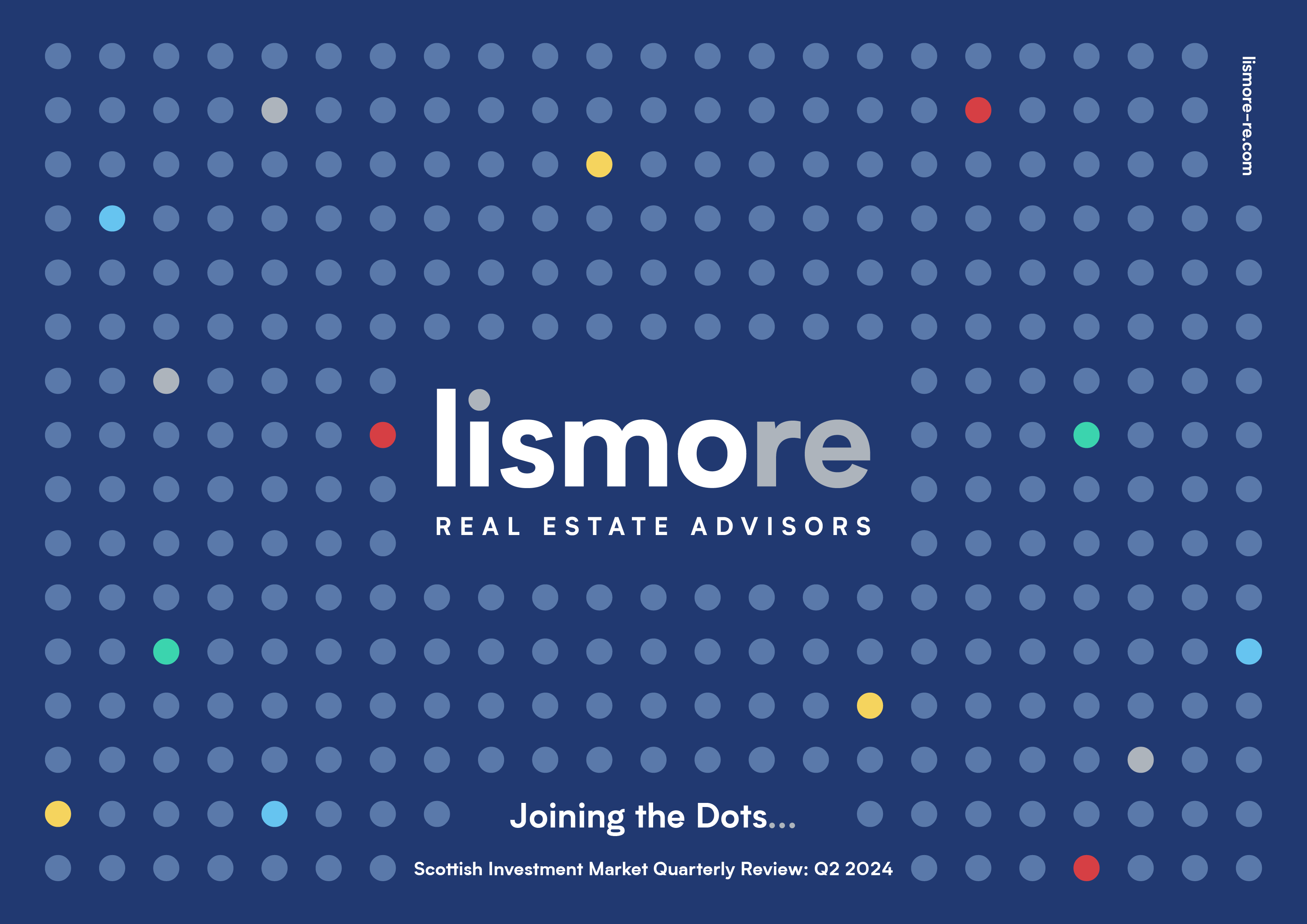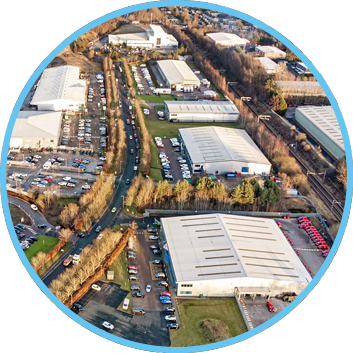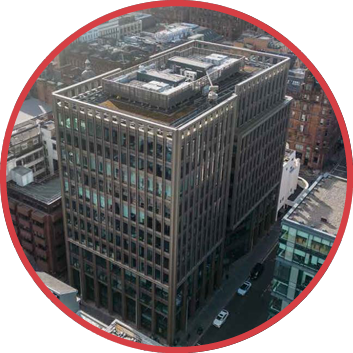
“Popularity should be no scale for the election of politicians. If it would depend on popularity, Donald Duck and The Muppets would take seats in Parliament.”
– Orson Welles
Over the last few years, at times it has felt like Donald Duck or The Muppets might have done a better job at running the country (locally and nationally). However, on the eve of a General Election, let’s hope that whoever wins can set us on a path of renewed optimism and creating an environment where business can flourish and really drive a period of sustained economic growth. A rising tide lifts all boats, and you must start with job creation.
The health of our cities is an essential ingredient in helping to stimulate sustainable growth and for the first time since we started these reviews, our focus in this edition will be on Scotland’s capital city – Edinburgh. Regularly described as “The most beautiful of all the capitals of Europe” but what do investors think, are they tempted to invest, what sectors are of particular interest and what characteristics really influence their investment decision-making?
To help shape our thinking, we are pleased to share a Q&A piece with Craig McDonald, Principal and Managing Director at Ardstone Capital UK. Ardstone have been investors in Edinburgh for many years, attracting UK and overseas capital, as well as managing development projects, working with the City’s Planning Department and striving to attract high quality occupiers.
With change brings opportunity and if there is to be a new regime, hopefully there will be no “muppets” and a clear understanding that good government is one of the most important factors in economic growth and social well-being…
Market Overview.
Key Themes
French SCPIs (Société Civil de Placement Immobilières) – increasing their influence. Similar to UK REITs, these Funds are becoming more prevalent. Not just the established investors such as Corum but newer entrants such as Remake, Log-in, Atland Voisin and Iroko starting to make their mark.
Interest rate optimism – unlikely to be the silver bullet that turbo-charges the market but if (as expected) we get some sort of cut by the Autumn, this will be a welcome start for what should be a longer-term lower interest rate environment and improving debt terms.
Development inertia – a combination of the higher cost of capital, build cost inflation and uncertainty over exit pricing continues to stymie the development pipeline across most sectors. Frustrating for developers but adding further to the rental growth story.
Genuine rental growth – in some sectors. In particular – prime offices and best in class retail, along with industrial and PBSA are seeing significant pressure on rents.
Prime offices test the market – at last we are seeing some prime offices come to the market in Edinburgh. These should give a good barometer/base for prime yields and give some comfort to investors that there remains appetite for the very best assets, particularly those with good fundamentals but also having strong ESG characteristics.
Private family money still prevalent – a recurring theme over the last 24 months, there remains a significant weight of private capital looking for a home. Historically sub £5 million, we are seeing the lot sizes increase, with activity up to c£20m not uncommon.
Transaction Volumes
Q2 saw £272m traded down 15% on Q2 2023.
Q2 volumes were 31% below the 5 year average.
A slower than anticipated Q2, with a lack of larger ticket sales combined with continued uncertainty in the market over the timing of future interest rate cuts and the impending UK General Election, affecting transaction volumes.
No Data Found
Pricing
The stand-off between buyers and sellers has eased somewhat – with more buyers becoming active but remaining reasonably “canny”. Momentum is improving, however, lenders and Investment Committees remain cautious meaning that there are pockets of buyer depth but this is not uniform across the sectors.
Logistics and multi-let industrials remain strong in terms of depth of demand. A number of recent sales in Eurocentral and Cambuslang (both prime locations) attracting multiple bids and competitive tension. Current prime yields remain close to 6% but we are anticipating that these will sharpen as strong rental growth encourages investors to be more aggressive on their entry assumptions and dip below 6%.
Retail Parks continue to offer good value. The demand /supply dynamic remains positive and with prime yields at 6.50-7.00%, the investment rationale remains compelling. Evidenced by a number of UK Funds returning to the acquisition trail, as well as the established overseas buyers. The High Street is also interesting but only in the strongest city centre pitches where rents have been properly re-based. Initial yields in the low 6’s with reversion to come is making sense.
In the Living sector, appetite remains robust but the number of relevant transactions has been frustratingly limited. Development funding is challenging and the number of up and built (stabilised) schemes trading has been fewer and far between. Nevertheless, the weight of capital chasing stock is meaning that prime yields are remaining reasonably stable at 5.00-5.25% for prime BTR and 5.25-5.50% for prime PBSA.
Buyer Activity
Fund activity remains selective and quite opportunistic. While the Living and Logistics sectors continue to be supported by research teams and Investment Committees, we are seeing other sectors including retail warehousing coming into focus. While they are likely to remain net sellers, we see some improvement in their appetite in the second half of the year.
The core-plus buyers are those most likely to benefit from any interest rate reduction(s) in the coming months. While the market has probably priced in most of any potential movement, further falls would help confidence and help those debt-backed buyers to become more active. They have become more prevalent but remain cautious on their modelling assumptions – particularly on exit yields.
Private equity is interesting. Yes they are active in markets where there is pressure from lenders to sell and larger portfolio transactions where DB Funds are exiting but we have also seen them chasing good (long leased) stock that looks “good value”. Perhaps it is a sign that there is not as much distress as had been predicted but their opportunistic approach to buying looks set to go beyond their traditional hunting grounds.
Key Recent Transactions.
Q2 saw some interesting themes and significant transactions which we have highlighted below:

Fullarton Drive, Cambuslang
“Pension fund snaps up four prime industrial units”
Vendor: Ropemaker Properties Limited c/o BPIM
Purchaser: Clydebuilt 2 Limited
Let to: Royal Mail, Righton & Blackburns, DPD and Siemens
Price/Yield: £14.725m / 6.12%
Date: June 2024

22 St Andrew Square, Edinburgh
“Off market sale of long let indexed linked hotel”
Vendor: Associated British Foods
Purchaser: Patrizia
Let to: Malmaison
Price/Yield: £23.5m / 4.95% (rising to 5.70% late 2024)
Date: May 2024

2 Greenmarket, Dundee and 4 Pacific Quay, Glasgow
“French SCPI acquires two long let HQ offices”
Vendor: LondonMetric
Purchaser: Remake Asset Management
Let to: BT plc & STV Central Ltd
Price/Yield: £36.6m / 7.00%
Date: May 2024

1 West Regent Street, Glasgow
“Major Glasgow city centre office sold”
Vendor: M&G
Purchaser: Corum
Let to: Shepherd & Wedderburn, Morton Fraser, CMS etc
Price/Yield: £45.8m / 8.68%
Date: April 2024
The investor view on Edinburgh…
Would you consider investment in Edinburgh during H2 2024?
No Data Found
An overwhelming response in the affirmative with 90% of respondents open to investment opportunities in the city over the second half of 2024.
This confidence in Edinburgh is replicated across the investment spectrum, with at least 90% of respondents in each investor class (property companies, funds and investment managers) looking at Edinburgh as a location for investment, demonstrating the attractiveness of the city to a broad range of investors.
A number of comments highlighted the city’s strong underlying dynamics, with a highly educated workforce, thriving financial services and tech sectors and growing tourism industry. These robust fundamentals are driving attractive rental growth in prime city centre offices, a resurgent prime retail sector and the strongest regional hotel sector.
What is your favoured sector for investment over the next 6 months?
No Data Found
44% of respondents selected Living as their most favoured sector for investment with the Office, Retail and Industrial sectors accounting for just under 20% each.
Property companies, funds and private equity investors all favoured the living sector with only investment managers more evenly split across the sectors.
Competition remains strong for PBSA sites in the city, with demand and supply dynamics continuing to prove attractive to investors. It was noted that clarity over the Housing Bill and rent controls is required to unlock pent up BTR investment.
What are the most important factors when considering investment into Edinburgh?
No Data Found
32% selected strong cross sector tenant demand as the most important factor for investment into Edinburgh, with the other three categories attracting between 22%-24%.
Key to Edinburgh’s success is its cross sector appeal, rather than the relatively even distribution of responses illustrates the spread of the city’s appeal.
A number of investors highlighted rent controls as the key issue needing resolution by the government, with a solution required to restart BTR investment which should be a key part of the housing mix. Edinburgh is a city which should be ripe for BTR investment yet in the words of one investor the draft Housing Bill ‘turned off investment overnight.’
“Expert view” on investment in Edinburgh…

Craig McDonald
Principal and Managing Director
Ardstone Capital UK
As a city what are the key characteristics that makes investing in Edinburgh attractive?
I think there are a couple of key characteristics but essentially Edinburgh is what one of our investors continually calls a “proper city”. I think what he means by that is that it has an International persona through tourism, which is obviously huge, and the Festival and culture more widely, but also amazing education, which provides an incredible pool of talent for those that locate their business in the city. It’s a very vibrant attractive place to live and work and that means it’s a very attractive place to invest. It’s the people and the place!
Plus of course from our perspective the lack of truly Grade A or “super-prime” offices provides an opportunity.
What sectors do you see as being particularly interesting in the City?
We focus on offices, with some interest in alternative use, but the restrained supply in the City means that offices are a very attractive sector right now and are likely to remain so for a number of years.
A number of our investors like retail in Edinburgh. With the St James Quarter now full and other new entrants coming to the city (e.g Uniqlo on Princes Street), the case for opportunities with propertly re-based rents in the best pitches of Princes Street and George Street, is compelling.
How do the office market dynamics (supply/demand) compare with the other UK “Big 6” markets?
The key differentiator is supply, as it is so limited, in part driven by the topography of the City and the Heritage/Planning constraints and perhaps the relentless demand from the hotel sector which has gobbled up a number of potential office developments recently. In many instances the dynamics are replicated in many other cities most notably Bristol where we are also active without the heritage UNESCO aspect.
What sectors do you see as driving occupational activity in the short to medium term?’
If you look at current demand it is fairly evenly spread across a number of sectors but we would expect the tech sector to continue its increasing influence and importance. There have a been a number of high profile success stories in the sector, such as Fan Dual and SkyScanner, placing Edinburgh firmly at the forefront of the latest wave of start up tech companies. Financial services has long been fundamental to Edinburgh’s success and despite some recent consolidation in the sector, it will continue to be a key occupational driver over the coming years.
How have you found the Planning Department during your development projects?
Without wishing to sound too obsequious they have been very understanding and supportive throughout each process we have been through and they seem to get the balance right. We have found the very open dialogue and pre-planning process most constructive and in contrast to some of our experiences in other cities.
Bearing in mind the critical lack of office supply, where do you see rents heading over the next 12 months?
The reality is that to build a “new” building you may well have to get to a rent of £50psf + which I am sure will seem to some to be a bit strong but we are very nearly there. As an industry we get very excited by another couple of pounds per square foot but to an occupier in a key sector such as tech, law or commerce looking for 15,000 sq ft another £4psf is affordable and if that cements your ability to attract and look after the best people you will pay it. So £50-£52.50 psf is not far away.
Does political uncertainty affect your investment decisions?
No – our decisions are based on property fundamentals first and foremost, we can’t control the political landscape but we can decide to invest in the best locations.

Chris Macfarlane
Director
Lismore Real Estate Advisors
As a city what are the key characteristics that make Edinburgh an attractive city to invest in?
Edinburgh benefits from a strong local economy, traditionally underpinned by financial services, with the likes of Baillie Gifford, Natwest Group, FNZ, HSBC and State Street having a major presence in the city. Over recent years the city has seen considerable growth from an emerging tech sector, with the city’s universities leading to a highly educated workforce. A real bonus for Edinburgh is it’s tourism industry which sees over 4 million people visit the city each year, generating significant revenue for retailers, restauranteurs and leisure operators, ensuring Edinburgh remains a vibrant capital city. These factors plus a healthy cross sector occupational market provide a compelling investment case.
What sectors do you see as being particularly attractive in the City?
Top quality well located city centre offices with strong ESG credentials continue to attract a broad range of investors including UK institutions, overseas pension funds and high net worth individuals. A lack of development pipeline coupled with the persisting supply/demand dynamics mean this is likely to continue over the short to medium term and, with prime rents now £45 psf, continued healthy rental growth should be expected over the coming years.
Student accommodation remains an attractive sector with UK institutions as well as platform builders targeting best in class developments. A shortfall of private rented accommodation coupled with strong demand for purpose build accommodation provides the rationale for investment. Prime high street retail on George Street or the best secondary locations off rebased rents remains compelling, with strong rental growth expected over the next 12-24 months.
How is national government policy impacting investment in Edinburgh?
Rent control legislation, first introduced in late 2022, put the brakes on the BTR market with developers struggling to make schemes stack up. What was intended to help make renting affordable has in fact led to private buy to let landlords taking their properties off the market in significant numbers. This combined with a stymied development market has further exacerbated what the Scottish Government have themselves called a ‘housing emergency’. The Scottish Government devolving power over business rates to local authorities has seen a number of councils, including Edinburgh, remove rates relief applied to listed buildings. The full effect is yet to be seen, however adding additional costs to buildings which already require greater CAPEX appears counter-intuitive.
How has the range of overseas investors evolved over the years?
Edinburgh has consistently been able to attract an eclectic mix of overseas capital over the years. German Funds have been one of the stalwarts, being particularly active in the office sector. Riding the wave of the Celtic Tiger in the early 2000’s, we had numerous Irish buyers (benefiting from aggressive lending terms) leading the charge, particularly in retail sector. More recently c 2015-2020 Korean syndicates have been prevalent, again in the office sector and most recently we have seen a flurry of French SCPI’s becoming active, liking the office/retail sectors. Add to these, investors from North and South America, Scandinavia, South Africa and the GCC and you can get a feel for the depth of buyer pool.
There will be an element of herd mentality and wanting to be seen to be keeping up with the competition but fundamentally, the natural beauty of the City, quality of life, strong demand/supply dynamics across the sectors and enduring liquidity make it attractive to capital from all over the globe.
Similarly, how has the UK investor profile changed over recent years?
For many years (till the early-mid 2000’s), UK Funds dominated the market, with an overall market share in the order of 75%. Several factors have caused a dramatic change since then, to a point where UK Funds only account for c25%. Low interest rates and an aggressive lending market led to property companies (Kenmore, Kilmartin, WG Mitchell to name a few) being able to compete on pricing and the run-up to the Referendum in 2014, really thinned the Fund market.
The highly leveraged prop co model has gone and we have reverted to a UK buyer pool dominated by private “old” money (Family Office and Trust) or conservatively geared property companies with a well-established line of credit.
Does the future look bright for Edinburgh?
Setting aside our vested interest, the answer is a firm “yes”!
The natural beauty of the city, its quality of life, world-class Universities and compelling demand/supply dynamics are well documented but moreover, the city has shown through good markets and bad that it’s key markets remain liquid. Not quite London but with such a broad investor base (from the UK and overseas), it is a serious alternative.
When your downside is well protected that is a good starting point for any investment decision and, in the case of Edinburgh, that is not changing any time soon…